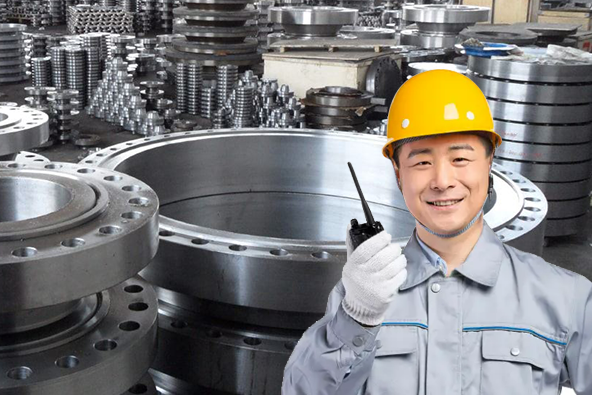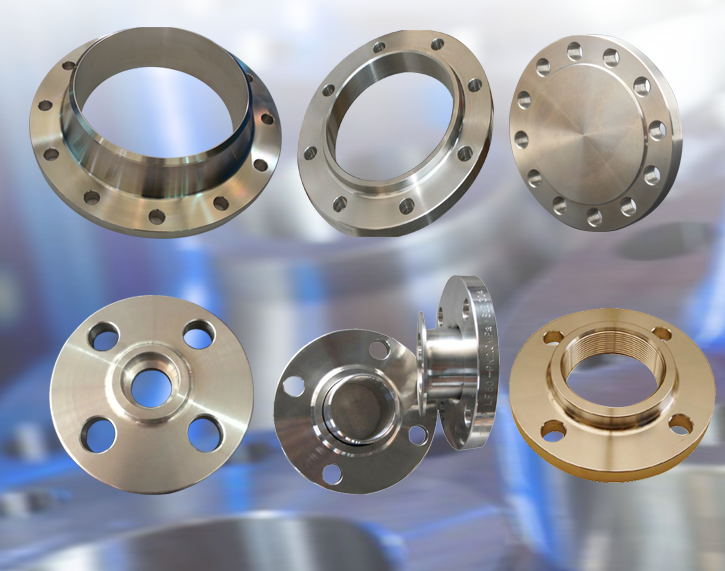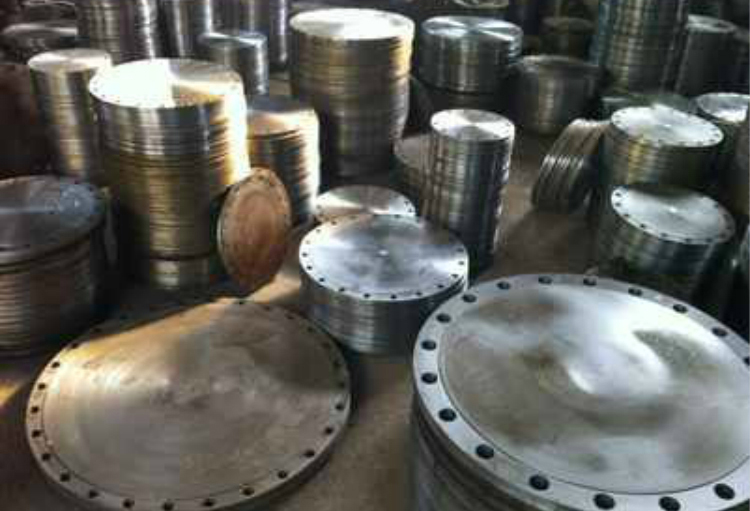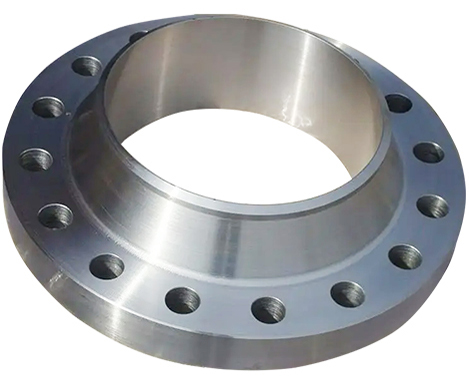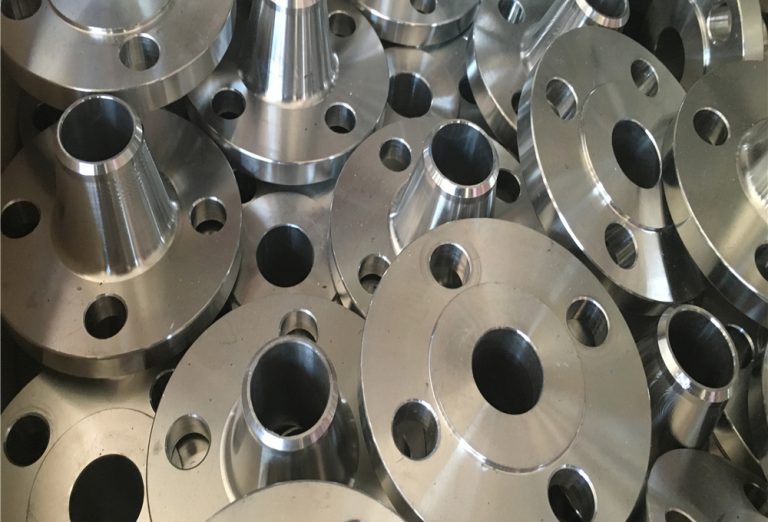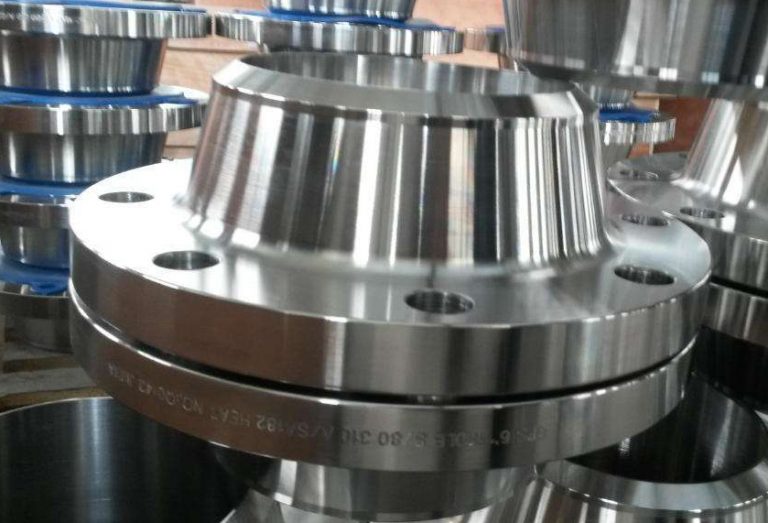I. Introduction
Flanges play an essential role in the piping industry, as they provide a secure and efficient way to connect pipes, valves, and other equipment. They are commonly used in various applications, including oil and gas, chemical processing, and water treatment plants. In this blog, we will explore the different connection methods of flanges, including bolting, welding, and adhesive bonding. It is crucial to understand the differences between these methods to choose the most suitable one for your project. Read on to discover the advantages and disadvantages of each connection method and the factors to consider when selecting one for your application.

II. Types of Flanges
Flanges come in various types, each designed to suit particular applications. Here are some of the most commonly used flange types:
- Weld neck flange A weld neck flange has a long tapered hub that supports the pipe and allows for safe welding. It is commonly used for high-pressure and high-temperature applications in the oil and gas industry.
- Slip-on flange A slip-on flange slides over the pipe and is then welded in place. It is ideal for low-pressure applications where alignment is not critical.
- Threaded flange A threaded flange screws onto the pipe threads for a secure connection. It is usually used for low-pressure applications that require frequent dismantling.
- Socket weld flange A socket weld flange has a socket-like shape that supports the pipe and prevents it from slipping. It is commonly used in small-bore piping systems.
- Blind flange A blind flange is used to close the end of a pipe, valve, or equipment nozzle. It is commonly used in piping systems where maintenance or inspection is required.
Choosing the right type of flange for your application depends on several factors, such as pressure, temperature, and pipe size. The type of flange can affect the overall performance of the piping system, making it essential to select the appropriate flange for your project.
III. Connection Methods
A. Bolting
Bolting is a common connection method for flanges and can be used for a wide range of applications.
Here are some steps involved in the bolting connection method:
- Place the gasket between the two flanges and align the bolt holes.
- Insert the bolts and hand-tighten them.
- Tightly tighten the bolts with a spanner, wrench, or torque tool following a predefined tightening sequence.
- Re-torque the bolts after a few hours or days to ensure a secure connection.
Advantages of bolting include:
- Ease of assembly and disassembly, allowing for maintenance and repair.
- Less expensive compared to other connection methods such as welding.
- Appropriate for large-diameter flanges and high-pressure applications.
Disadvantages of bolting include:
- Tendency to loosen over time, which requires periodic re-tightening or maintenance.
- Potential for leaks due to uneven tightening or gasket failure.
- Limited suitability for high-temperature and corrosive applications.
Factors that affect the tightness of a bolted flange connection include:
- Bolt diameter and length.
- Nut material and thread lubrication.
- Gasket type and compression thickness.
- The flange type and surface finish.
- Tightening tool calibration and operator skills.
Understanding the advantages and disadvantages of bolting, along with the factors affecting tightness, can help you make an informed decision when selecting the most appropriate flange connection method for your application.
B. Welding
Welding is a permanent connection method for flanges and is commonly used in high-pressure and high-temperature applications.
The steps involved in the welding connection method include:
- Preparing the welding surfaces of the flanges and pipe ends by cleaning and beveling them.
- Aligning the flanges and holding them in position using clamps or tacks.
- Welding the flanges to the pipe ends in a desired welding position using a welding technique and filler material.
- Inspecting the welded joint for defects and quality control.
Advantages of welding include:
- Strength and durability of the welded joint.
- Minimal risk of leakage or failure.
- Suitable for high-pressure and high-temperature applications.
Disadvantages of welding include:
- High cost and labor-intensive process compared to other connection methods.
- Lack of disassembly and repairability.
- Potential for distortion, warping, and overheating of the flanges or pipe ends.
Types of welding techniques used in flange connections include:
- Gas tungsten arc welding (GTAW): also known as TIG welding, uses a non-consumable tungsten electrode to produce a high-quality weld with minimal spatter.
- Gas metal arc welding (GMAW): also known as MIG welding, uses a consumable wire electrode and shielding gas to produce a faster, lower-quality weld.
- Shielded metal arc welding (SMAW): also known as stick welding, uses a consumable electrode coated with flux to produce a strong, reliable weld.
Understanding the advantages and disadvantages of welding, along with the different welding techniques, can help you make an informed decision when selecting the most appropriate flange connection method for your application.
IV. Factors to Consider when Choosing a Connection Method
When selecting a connection method for flanges in a piping system, several factors need to be considered to ensure optimal performance and safety. Some factors to consider include:
- Material properties of flanges and pipes – The type of material used for flanges and piping can impact the selection of a connection method. For instance, high-temperature materials may require welding, while low-temperature materials may need a bolting method.
- Temperature, pressure, and fluid characteristics – The temperature, pressure, and type of fluid flowing through the piping system can also affect the selection of a connection method. Higher pressures and temperatures may require welding, while low-pressure or vacuum situations may use a bolted connection.
- Cost considerations and time constraints – The cost of the materials, tools, and installation process, along with the time required to complete the job, can all impact the choice of connection method. For instance, welding may be more expensive and time-consuming than bolting, which may be more appropriate for short-term projects.
Overall, the selection of a connection method for flanges in a piping system requires careful consideration of these and other factors. By understanding the material properties, temperature, pressure, fluid characteristics, and costs involved, you can choose a connection method that maximizes performance and safety, while also meeting project requirements.
V. Conclusion
Choosing the right connection method for flanges is critical to ensure the safe, efficient performance of a piping system. The connection method should be selected based on factors such as material properties, temperature, pressure, fluid characteristics, cost considerations, and time constraints. Welding and bolting are the most common connection methods used in flange connections, and each has its advantages and disadvantages. Overall, understanding the factors that influence the selection of a connection method can help ensure that the chosen method maximizes safety and efficiency while meeting the requirements of the project.
Dear Customer, If you are in need of flanges, please feel free to contact us via email to get in touch with our team at YANHAO. As a leading flange manufacturer in China, we offer a wide range of high-quality products at competitive prices. We can provide you with various types of flanges to meet your specific requirements.
Our team at YANHAO understands the importance of choosing the right connection method for flanges, and we are committed to providing you with the best possible solution based on your project’s specific needs. We have years of experience in the industry and are dedicated to delivering products of the highest quality and standard.
So, please don’t hesitate to contact us via email for any questions or inquiries about our products, services, or pricing. We look forward to hearing from you and working with you to meet your flange needs.
Lewis Liu
Hello, I am Lewis Liu, a professional sales engineer with over ten years of experience in the flange fittings industry. I am highly knowledgeable in flange selection, installation, and maintenance. I am passionate about providing customers with the best solutions to ensure their pipeline systems run smoothly, safely, and reliably.
If you have any questions or concerns regarding flange fittings for your pipelines, whether it’s about selection, material choice, specification requirements, or any other aspect, please feel free to contact me at any time. I am committed to offering professional advice and assistance to help you make informed decisions and meet your needs.
